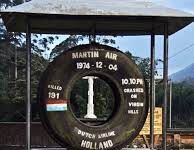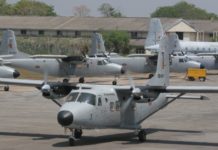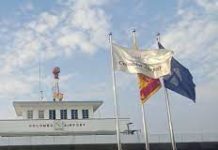Compiled by : Group Captain Kuma Kirinde
Airbus has a pattern for naming planes, starting with “A3” and then two numbers.
It began with the A300, A310, A320, A330, and A340. But then, instead of A350,
they named their first double-deck aircraft A380, skipping 360 and 370. Later on,
they introduced the A350. So why did Airbus choose “A380” for their superjumbo
and not “A350”? And why wasn’t the A350 named A360? Here’s the story of how
the Airbus A380 got its name.
The Early Concepts
The journey to naming the Airbus A380 began with a vision to break Boeing’s
monopoly in the jumbo market and create something that could rival the
legendary 747. In 1988, Airbus initiated a project called the UHCA:
Ultra High Capacity Aircraft. The first idea was to attach two A340 fuselages side by
side, making the aircraft ultra-wide. This model was called HDB (horizontal doublebubble), and it became the earliest version of what would later become the A380.
The team behind the UHCA project came up with various European double-decker
jet proposals, such as the DASA A2000 and the BAe AC14. In 1993, three of them
were joined together, and the real development of the A380 began. Those were
the DASA P502/P602, the BAe AC 14, and the Aerospatiale ASX 500/600. All of them
were called Family 1 by Airbus, and the working title of the aircraft was the 3E P500-
100 (smaller version) and the 3E P500-200 (larger version).
Variants and Naming Traditions
Airbus names usually start with “A3,” a tradition that began a long time ago. The
new airplane would have to follow that format. But what number would it get? The
logical answer would be A350, right? At this early stage, Airbus renamed the project
to the A3YY, then changed the “Y” to “X,” and it became the A3XX.
By 1994, the A3XX took its now-familiar shape, with two versions: the base A3XX100 with approximately 500 seats and the A3XX-200 with approximately 600 seats. Its evolutionary stages got assigned internal designations: Status 1, Status 2, Status 3, and so on, until Status 10. The tenth variant was what we would recognize as the A380 today.
Rebranding and the Final Name
Several problems struck, including the Asian financial crisis and the Airbus design
team’s inability to meet required fuel efficiency levels. The program slowed down,
and there were fears that the aircraft would never see the light of day. A new push
was needed, and a rebranding.
In the last months of 2000, Airbus decided that the aircraft was going to be
launched, and it would have the final name: the A380. There are many versions of
why the company jumped from “4” straight to “8.” Some say it was because “8” is
considered a lucky number in China. But Noël Forgeard, the CEO of Airbus SAS at
the time, reportedly said, “8 suggests double-decks, one on top of the other.” And
so, the decision was made, and the name stuck to the aircraft.
The whole proposed family underwent a significant revamp, and the new outlook
of the family was drafted, with numbers that would better emphasize the size and
advancement of the airplane: the A380-700, the A380-800, and the A
The naming of the Airbus A380 was a significant decision in the aircraft’s
development. While there were various theories and considerations, the final
choice of “A380” was influenced by the double-deck design of the aircraft. The
number “8” in the name was seen as symbolizing the two decks, one on top of the
other. Additionally, the number “8” is considered lucky in some cultures, such as in
China, which may have contributed to the decision. Ultimately, the name “A380”
was chosen to emphasize the size and advancement of the airplane, setting it apart
from previous models and marking a new era for Airbus.
Document Courtesy: Mond Ortiz -Source: https://mondortiz.com/the-story-behind-the-name-of-the-airbus-a380/
Compiled by: Group Captain Kumar Kirende











